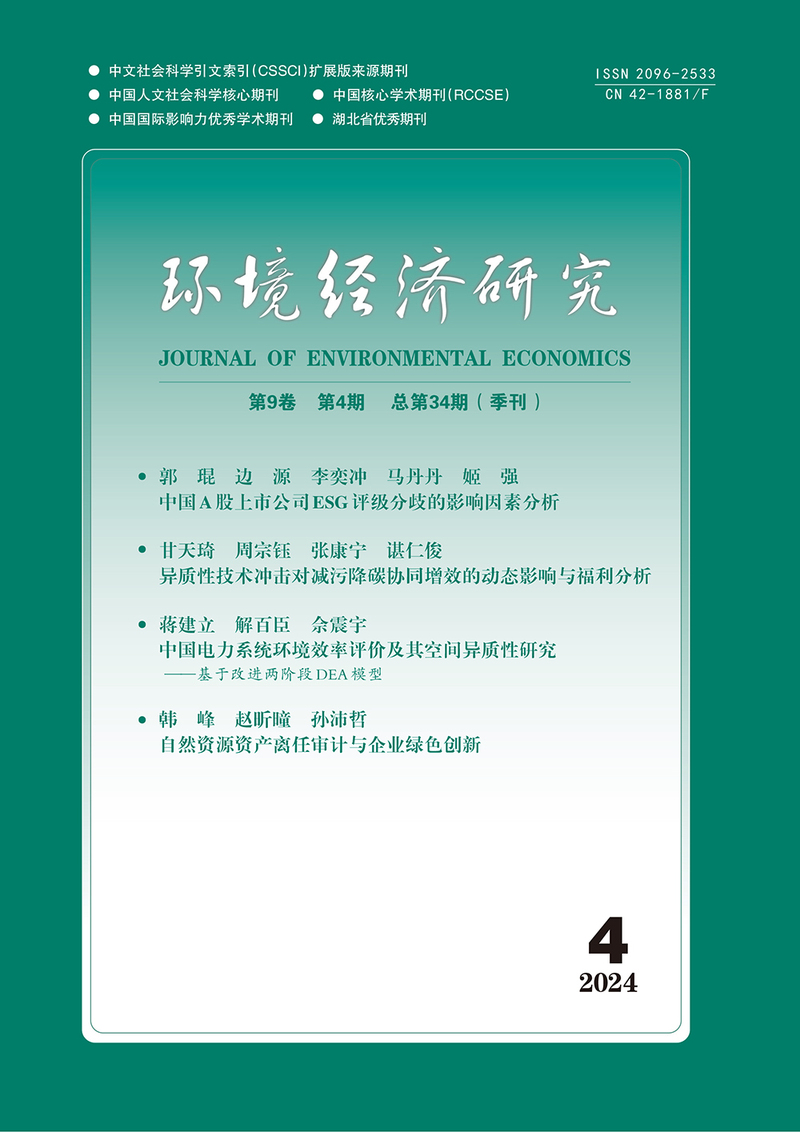Energy Saving and Emission Reduction Activity with Its Impact on Industrial Win-Win Development in China Under the Constraints of Carbon Peak
Li Zhiguo, Wang Jie and Che Shuai
摘要:在绿色转型的宏观经济背景下,中国工业的可持续发展面临碳达峰目标的现实约束。本文基于方向性距离函数的动态行为分析模型和Malmquist-Luenberger指数,通过对30种工业增长、节能减排和碳达峰情景的综合评估来明确中国工业经济增长与节能减排协同发展的最优路径。研究表明:2020—2030年预测区间内,减排政策实施导致潜在损失始终为负,而工业减排的潜在损失在时间维度上渐趋下降,证明工业双赢发展目标未来可期;工业产出增速8%、能耗增速4.8%且工业部门2030年碳排放达峰路径下潜在产出净值最大,即为中国未来工业双赢发展的最优化路径;最优路径下工业部门全要素生产率整体上呈现上升态势;最优路径下碳强度下降的相对减排目标基本完成,绝对减排目标则不尽理想,省际间碳强度减排差异明显。因此,需要明晰工业部门节能减排与绿色发展的双赢路径,不断强化工业低碳转型发展的内在动力,同时积极制定差异化的空间经济发展和减排策略。
关键词:碳达峰;碳强度;工业经济;碳减排;节能减排
Abstract: In the context of the green transition of the macro economy, the sustainable development of China's industry faces the practical constraints of the carbon peak goal. Based on the dynamic behavior analysis model of the directional distance function and the Malmquist-Luenberger index, this paper clarifies the optimal coordinated development of China's industrial economic growth and energy conservation and emission reduction through a comprehensive assessment of 30 industrial growth, energy conservation and emission reduction scenarios, and carbon peak. Research shows that in the forecast period from 2020 to 2030, the implementation of emission reduction policies will result in potential losses that are always negative, while the potential losses of industrial emission reductions are gradually decreasing, proving that the industrial win-win development goal can be expected in the future. The industrial sector has the largest potential net output value under the path of peak carbon emissions in 2030 when industrial output growth rate is 8% and energy consumption growth rate is 4.8%, which is the win-win development of industrial growth and emission abatement. The total factor productivity of the industrial sector under the optimal path is generally on the rise. The relative emission reduction target of carbon intensity decline under the optimal path is basically completed, while the absolute emission reduction target is not ideal, and the difference in carbon intensity emission reduction between provinces is obvious. Therefore, it is necessary to clarify the win-win path of energy conservation and emission reduction and green development in the industrial sector, continuously strengthen the internal driving force of industrial low-carbon transformation and development, and actively formulate differentiated spatial economic development and emission reduction strategies.
Keywords: Carbon Emissions Peak; Carbon Intensity; Industrial Economy; Carbon Emissions Reduction; Energy Conservation and Emission Reduction
DOI:10.19511/j.cnki.jee.2021.02.002
基金项目:中央高校基本科研业务费专项资金项目“能源供给侧结构性改革背景下天然气产业管道网络经济效率提升研究”(20CX04001B)。
